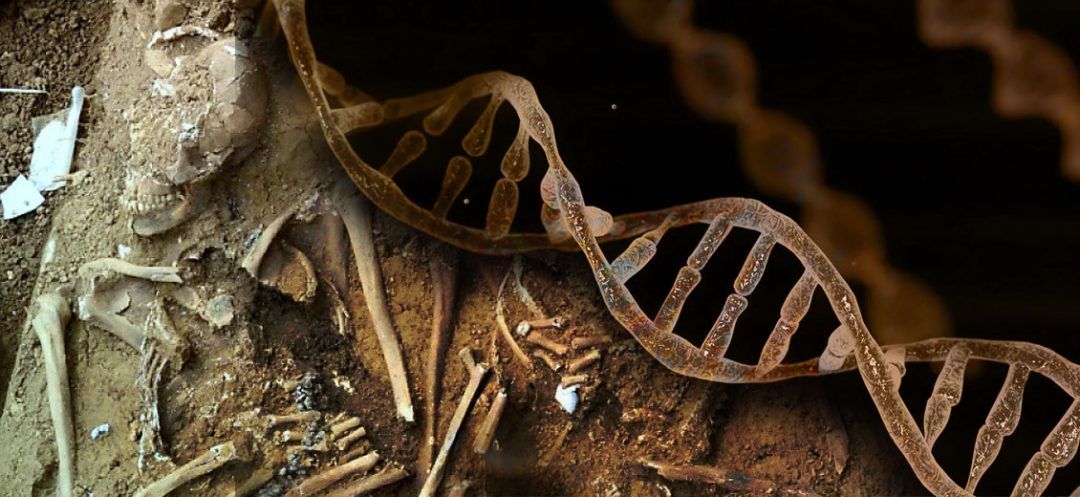
Researchers from the prestigious Max Planck Institute for Evolutionary Anthropology have reconstructed the oldest known human genomes from southern Africa, revealing genetic continuity spanning nearly 10,000 years.
Scientists recently pieced together the oldest human genomes from South Africa, dating back nearly 10,000 years. These DNA sequences come from a man and a woman whose remains were discovered in the Oakhurst rock shelter, near George, on the country's southern coast, explained Victoria Gibbon, a biological anthropology professor at the University of Cape Town (UCT). In total, 13 sequences have been reconstructed so far from human fossils found in the area, covering a period from 1,300 to 10,000 years.
Genetic Stability
The reconstruction of these genomes has provided unprecedented insights into the long-standing genetic continuity in this region, from the early Holocene to the late Stone Age, according to a study published on September 19 in Nature Ecology & Evolution. This contrasts with other regions of the world, especially Europe, where research has shown significant genetic shifts resulting from human migrations over the past 10,000 years. "These new findings from southern Africa are quite different and suggest a long history of relative genetic stability," said Professor Joscha Gretzinger of the Max Planck Institute for Evolutionary Anthropology in Leipzig, Germany.
A Significant Gap
Despite being home to some of the oldest hominin fossils, southern Africa has only recently seen its ancient genomes reconstructed. This work fills an important gap in understanding the genetic formation of the region over the centuries. The introduction of pastoralism and agriculture around 1,300 years ago significantly altered the genetic pool in much of southern Africa. However, the hunter-gatherer population in the Oakhurst region retained the ancient genetic signature derived from the Pleistocene (the geological epoch when Homo sapiens first emerged). According to the study’s authors, these findings confirm a genetic continuity that persists to this day, despite recent mixing with other African populations.
Preservation Conditions
New DNA extraction technologies have made it possible to study ancient human remains, despite the region’s challenging preservation conditions. This may explain the limited number of ancient genomes discovered in southern Africa. Nonetheless, these discoveries open new avenues for understanding the demographic trajectories of local populations. The data will also allow researchers to revisit migration models and interactions between indigenous populations and those arriving from other regions.
With AFP
Scientists recently pieced together the oldest human genomes from South Africa, dating back nearly 10,000 years. These DNA sequences come from a man and a woman whose remains were discovered in the Oakhurst rock shelter, near George, on the country's southern coast, explained Victoria Gibbon, a biological anthropology professor at the University of Cape Town (UCT). In total, 13 sequences have been reconstructed so far from human fossils found in the area, covering a period from 1,300 to 10,000 years.
Genetic Stability
The reconstruction of these genomes has provided unprecedented insights into the long-standing genetic continuity in this region, from the early Holocene to the late Stone Age, according to a study published on September 19 in Nature Ecology & Evolution. This contrasts with other regions of the world, especially Europe, where research has shown significant genetic shifts resulting from human migrations over the past 10,000 years. "These new findings from southern Africa are quite different and suggest a long history of relative genetic stability," said Professor Joscha Gretzinger of the Max Planck Institute for Evolutionary Anthropology in Leipzig, Germany.
A Significant Gap
Despite being home to some of the oldest hominin fossils, southern Africa has only recently seen its ancient genomes reconstructed. This work fills an important gap in understanding the genetic formation of the region over the centuries. The introduction of pastoralism and agriculture around 1,300 years ago significantly altered the genetic pool in much of southern Africa. However, the hunter-gatherer population in the Oakhurst region retained the ancient genetic signature derived from the Pleistocene (the geological epoch when Homo sapiens first emerged). According to the study’s authors, these findings confirm a genetic continuity that persists to this day, despite recent mixing with other African populations.
Preservation Conditions
New DNA extraction technologies have made it possible to study ancient human remains, despite the region’s challenging preservation conditions. This may explain the limited number of ancient genomes discovered in southern Africa. Nonetheless, these discoveries open new avenues for understanding the demographic trajectories of local populations. The data will also allow researchers to revisit migration models and interactions between indigenous populations and those arriving from other regions.
With AFP
Read more



Comments